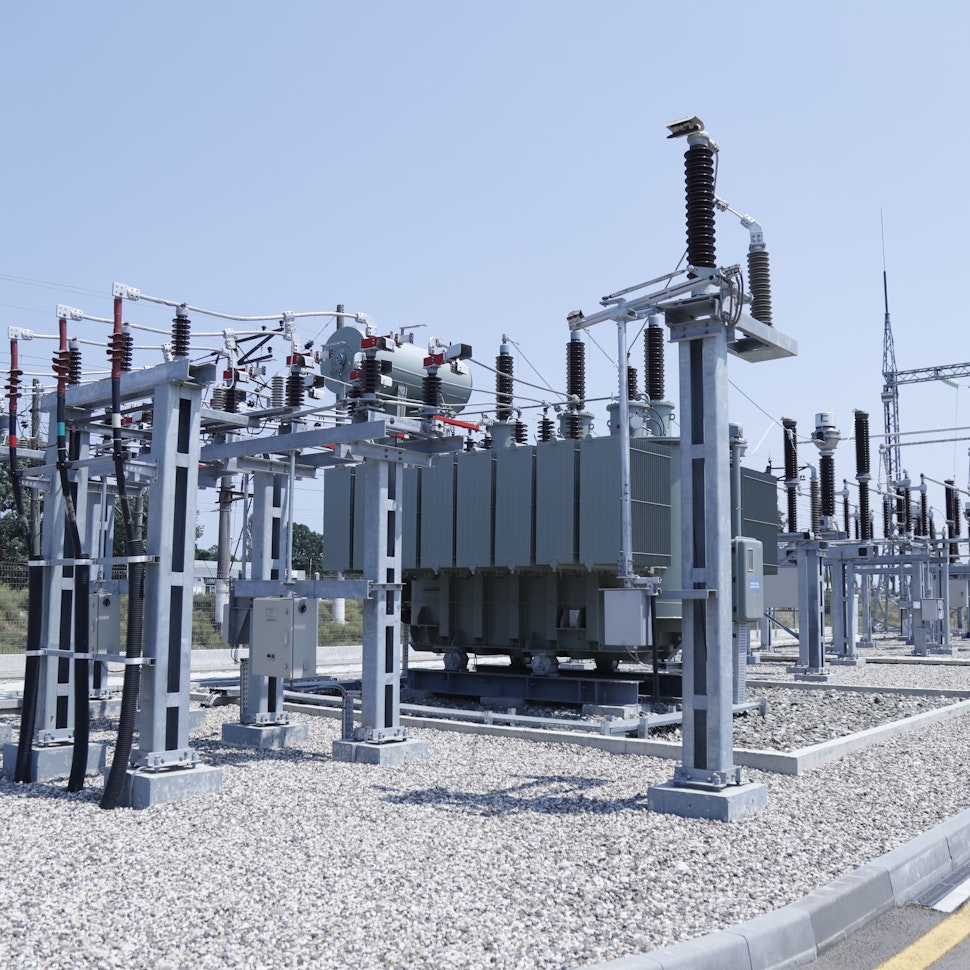What is rated power and how is it used in solar design?


Jeremy Vickerman
Senior Content Manager
Senior Content Marketing Manager at RatedPower with extensive experience in content strategy, production, and communications. Over a decade of expertise spanning marketing, recruitment consulting, and public relations across the UK and Spain, with a strong track record in driving brand visibility and audience engagement.


Hassan Farhat
Lead Technical Advisor
Hassan Farhat has a background in Energy Engineering and excelled in his Master of Science in Renewable Energy in Electrical Systems. More than three years ago, he joined the RatedPower technical team, where he works as a Solar Photovoltaic Engineer and Customer Success Manager at RatedPower.
Hassan has a thorough understanding of the industry and of RatedPower’s pvDesign, the digital solution to reduce LCOE and maximize productivity of utility-scale PV plants. He's passionate for renewable energies and their role within the global environmental transition.

What are rated power and peak power? How do both support solar designers in their decision-making? Read on to find out.
Content
What is rated power?
Rated power definition: also known as the power rating, indicates how much power an appliance (like a solar panel) can generate under ideal test conditions. This specification details the maximum power output the manufacturer designed the solar panel to deliver.
In real-world conditions, factors like cloud cover, high temperatures, dust buildup, and poor panel setups mean the actual power generated will fall below the rated power. However, the rated power still provides a practical baseline for comparing solar panels and estimating potential production capacity.
Why is rated power important?
Knowing the rated power of a panel makes it possible to calculate the potential yield of a planned solar installation based on the number and type of panels included. Comparing the expected yield to actual recorded production can highlight where the system is underperforming.
For example, if the output is substantially lower than anticipated by the rated power, it may signal issues needing maintenance or configuration adjustments, even if the solar owner considers environmental conditions.
When selecting which PV technology to install, rated power is a valuable comparison tool that helps choose those best suited to the installation and site requirements. Tracking changes in rated power over time for an existing system can also indicate possible degradation and inform scheduled upkeep and replacement.
Energy providers rely on the combined rated capacity of connected solar systems to evaluate their impact on the grid infrastructure and generation capacity needs. This power rating provides a standardized metric that has many uses throughout the solar PV project lifecycle.
What is rated power data used for?
The power rating for solar panels and inverters provides valuable data for various applications throughout the PV system lifecycle.
System design and sizing
Solar installers use rated power to calculate the number of panels and the proper inverter size needed to meet a project's energy requirements.
Production estimates
Based on rated power, expected generation and financial models can be developed to evaluate project feasibility. Solar technicians refine these forecasts with other production factors.
Inverter selection
Matching the inverter's power to the total power of the panels ensures there's enough capacity for converting and delivering electricity. It is a critical consideration for the optimal functioning of the solar power system.
Performance monitoring
Comparing actual output to rated power provides insight into a system's expected performance. Deviations can indicate issues, allowing for timely interventions and system optimization.
Quality control
Panel-rated power measured during quality checks ensures manufacturing consistency and detects underperforming units. Doing so contributes to the overall reliability and efficiency of the solar panel system.
Degradation tracking
Periodic rated power measurements help quantify panel degradation over time to predict maintenance needs. These power measurements track panel wear and tear, predicting maintenance needs and ensuring long-term system reliability.
Grid integration
Utility workers use power data to evaluate infrastructure effects and prepare for solar expansion. This process helps the effective integration of solar power into the existing electrical grid.
This standard power rating is a fundamental data point for design, modeling, monitoring, and management across the complete PV system lifecycle.
Rated power vs. peak power
Besides rated power, solar panel specifications often list a peak power rating. While related, these two terms refer to different measurements.
Rated power indicates the continuous power a solar panel can produce over time in standard test conditions. It represents its usable power capacity.
Peak power is the maximum instantaneous power the solar panel can output for a short duration, typically around 20 milliseconds. Peak power ratings are generally higher than the rated power of the same solar panel.
Peak power is not sustainable over long periods due to internal resistance and heat buildup. Rated power gives a more realistic indication of production capacity.
Peak power ratings are practical for appropriately sizing equipment like inverters that must handle momentary spikes in current or voltage from the panels. They also are useful as appliances generally hit peak power output when first powered on.

Design utility-scale solar at lightning speed
Exploring Key Questions for Utility-Scale PV Project Optimization
Join our Technical Advisor, Jorge Contreras, as he reveals what you should be asking yourself before advancing your PV project to the next phase. We’ll explore some of the tools in our software, such as batch design, clone design, or comparison tool.

Latest stories
Related glossary posts
Technology and engineering
How solar zenith and azimuth impact panel efficiency
Updated 8 SEP, 25

Technology and engineering
Albedo and Solar Power: What You Should Know
Updated 8 SEP, 25

Technology and engineering
What is a solar substation and how to customize yours with RatedPower software
Updated 5 MAY, 25

Related posts
Technology and engineering
Outsmarting congestion: How efficient solar design helps navigate Nordic grid limits
Learn how Nordic operators and solar developers are adjusting to tighter grid conditions and how policy and design decisions are keeping projects on track.
Updated 16 DEC, 25

Technology and engineering
The rise of ultra-thin perovskite solar cells
Learn about Japan’s $1.5B initiative to commercialize ultra-thin, flexible perovskite solar cells and how it could transform the solar landscape globally.
Updated 30 SEP, 25

Technology and engineering
The green hydrogen boom in LatAm
Latin America is emerging as a green hydrogen leader. Learn how LatAm countries are leveraging solar and wind power to drive green hydrogen production.
Updated 22 JUL, 25

- RatedPower
- Glossary
- R
- Rated power
 Watch a demo
Watch a demo Ask our AI Product Expert
Ask our AI Product Expert


